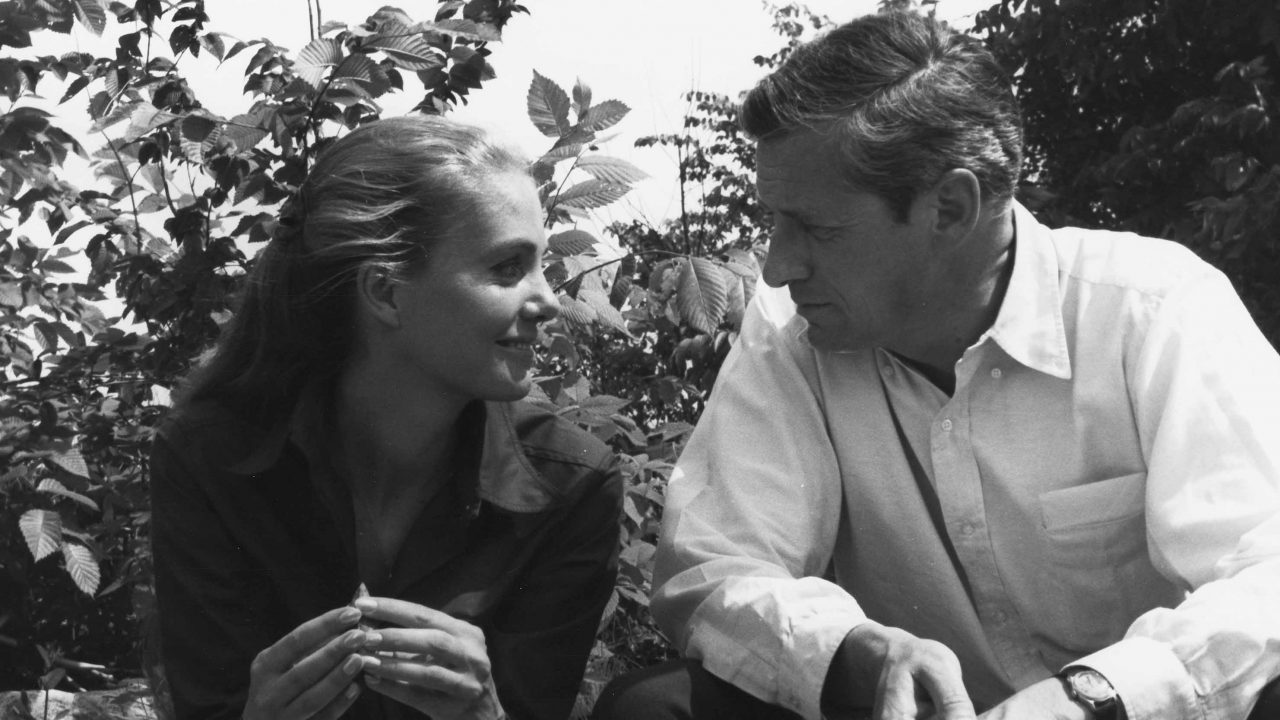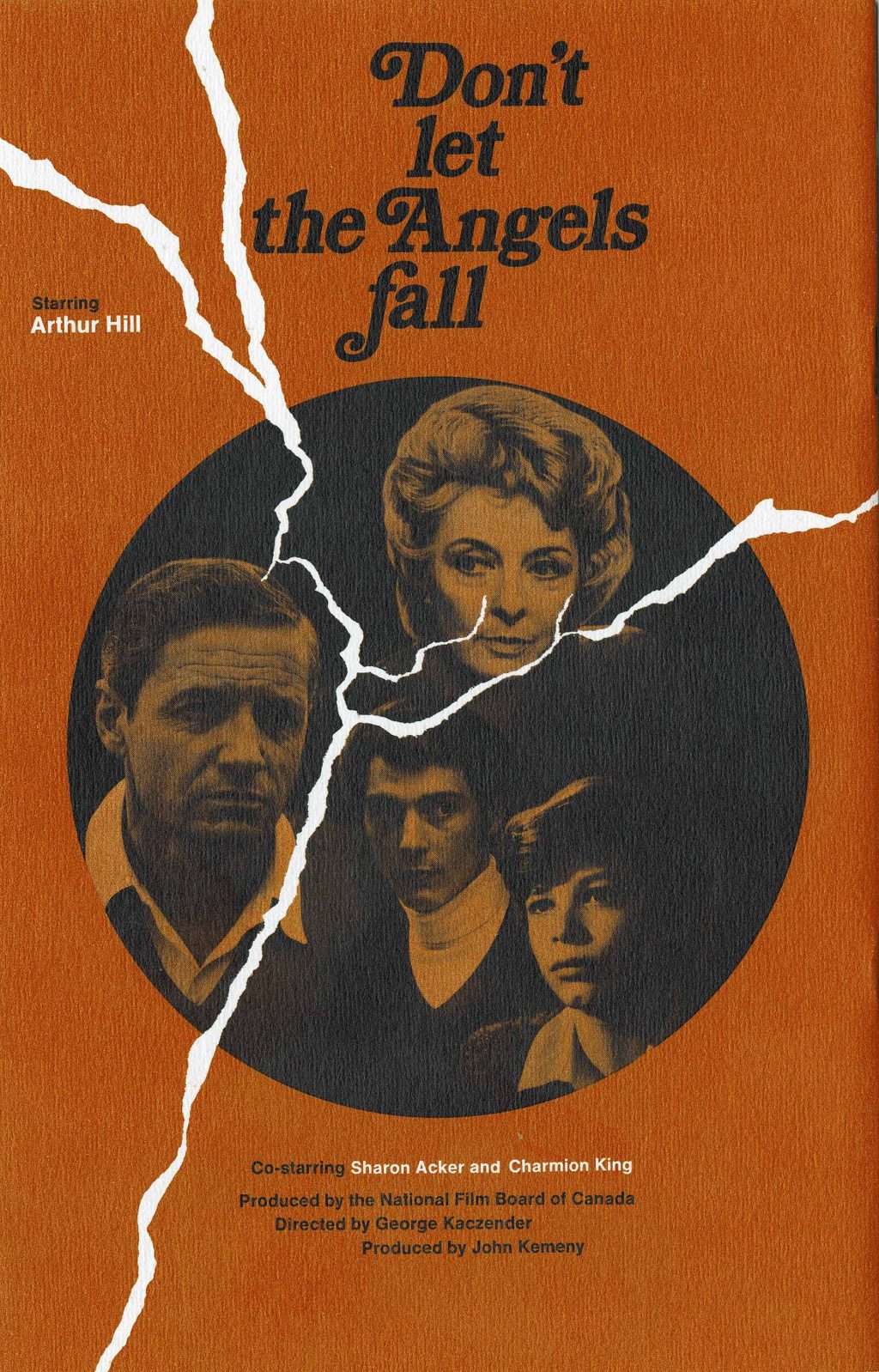
Don’t Let the Angels Fall and The Curse of Cannes | Curator’s Perspective
Don’t Let the Angels Fall and The Curse of Cannes | Curator’s Perspective
Imagine producing a feature film and getting an invitation to enter it in competition at the Cannes Film Festival. Pretty great, right? You’re on your way to a box office hit, right? Well, in the case of the NFB’s Don’t Let the Angels Fall, the first Canadian feature drama to ever compete at this festival, things didn’t quite work out that way.
First, a little background. The film was written by novelist Timothy Findley, based on a story by director George Kaczender, and shot in Montreal in the summer of 1968 with Canadian actor Arthur Hill (The Andromeda Strain, Harper) in the lead role. Sharon Acker, Charmion King and John Kastner (who went on to direct documentaries) were cast in important roles, as were Quebec actors Monique Mercure and Michèle Magny.
The story is about a middle-aged man who, after having an extra-marital affair, finds he can no longer relate to his wife and children—or to the rest of the world, for that matter. The family breaks down, and each member has a crisis. This is very much a film of its era. The 1960s saw many films about people feeling alienated and searching for meaning in a predominantly materialistic society.

NFB staff were ecstatic when Don’t Let the Angels Fall was invited to compete at the Cannes Film Festival. The premiere at Cannes took place on May 12, 1969, to a warm reception. (The actors, who attended the screening, had been terrified that the film would not be received well. The night before, an Italian film had been greeted with boos and catcalls!)
Kastner, who played the oldest son, Michael, was also covering the premiere for a Toronto newspaper. He wrote that when director Kaczender and the cast walked onto the red carpet on the way to the screening, they were embarrassed to hear onlookers ask, “Qui sont ils?” (“Who are they?”)!!
Kastner’s embarrassment continued when he saw himself on the big screen doing his one nude love scene—“My lips were as big as the Titanic,” he stated. He was very happy that his parents were not in the theatre to witness this. The audience warmly applauded the film, but the critics didn’t like it. The reviews that came out the following day were mixed at best. Variety gave it a good review, but the majority of publications called the film pretentious.
Canadian critics picked up on the negative reviews and relayed the news back home. Even with the bad reviews, Columbia Pictures agreed to distribute the film in Canada in the fall, but this caused some unexpected problems.
The NFB’s Distribution department did not want to enter it in the annual Canadian Film Awards, which were to be held a few days before its scheduled release in Toronto and Montreal. They felt that if the film didn’t win any major awards (influenced by the bad reviews), it would kill its box office potential. Others at the NFB thought this was ludicrous, but in the end, it was decided not to submit the film to the CFAs, to give it a better chance to succeed.
Don’t Let the Angels Fall was released in Toronto on October 24 (in one theatre) and in Montreal on the 29th (in two theatres). The result: it bombed in Toronto and played two weeks in Montreal (thanks largely to a very good review in the Montreal Star). A film with so much promise was out of theatres in just two weeks. Columbia did release it in several other Canadian cities over the next few months, but it did not fare much better.
So, what happened? Is Don’t Let the Angels Fall that bad? Actually, no. As I wrote earlier, it’s a film of its era. It does have a downbeat feel to it, but the acting is solid throughout. The middle of the film drags a bit, but overall it makes for interesting viewing. I think the reason critics had such a mixed response to it is that this is a small art-house film.
It was shot in black and white and doesn’t have any big-name stars in it, so, very little box office potential. Today, this type of film would quickly make its way to a streaming service where it would be categorized as an art–house or indie production and enjoyed by people who seek out these types of films.
Sometimes, premiering a film at a prestigious festival is not the best strategy. This was the case for Don’t Let the Angels Fall. It probably would have gone over better at a smaller festival without the big media spotlight.
I invite you to discover this small but unique Canadian feature. It remains a valiant effort, and as such I applaud it. Enjoy.
Don’t Let the Angels Fall, George Kaczender, provided by the National Film Board of Canada
(A huge thank you to John Kastner for his insights and recollections)




Totally agree with “huge thank you to John Kastner for his insights and recollections”
—-
personal blog: nativecasinos.ca